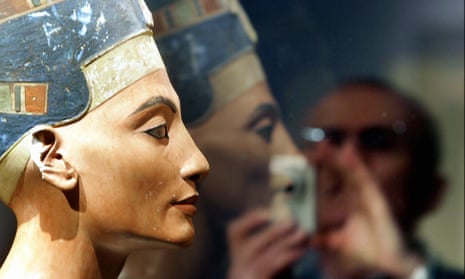Hidden doorways in the ancient Egyptian tomb of King Tutankhamun may lead to the long-lost resting place of Queen Nefertiti, a scientist has claimed.
British archaeologist Dr Nicholas Reeves, based at the University of Arizona, made the claim after studying high-resolution scans of the walls of King Tutankhamun’s burial chamber in the Valley of the Kings, near Luxor.
The scans are said to reveal two hidden entrances behind the painted plaster.
One doorway appeared to lead to a store room and the other a continuation of Tutankhamun’s burial chamber. Dr Reeves believes the second door may open into the tomb of Nefertiti.
If he is right, a chamber of treasures more magnificent even than the tomb of Tutankhamun awaits discovery.
Dr Reeves wrote in a paper published by the Amarna Royal Tombs Project, which he heads: “Cautious evaluation of the ... scans over the course of several months has yielded results which are beyond intriguing: indications of two previously unknown doorways, one set within a larger partition wall and both seemingly untouched since antiquity. The implications are extraordinary.”
The unusually small size and shape of Tutankhamun’s richly furnished burial chamber has puzzled archaeologists since its discovery in 1922 by Howard Carter.
It gives the impression of being an antechamber, rather than a tomb fit for a king. Dr Reeves suggests that it was built as an extension to another tomb perhaps belonging to Queen Nefertiti.
Famed for her beauty, Nefertiti was the wife of Pharaoh Akhenaten – Tutenkhamen’s father – and ruled with him as queen of Egypt in the 14th century BC.
She wielded enormous influence and may have been as powerful a figure as her husband – yet her tomb has never been found.
- The Press Association contributed to this report

Comments (…)
Sign in or create your Guardian account to join the discussion